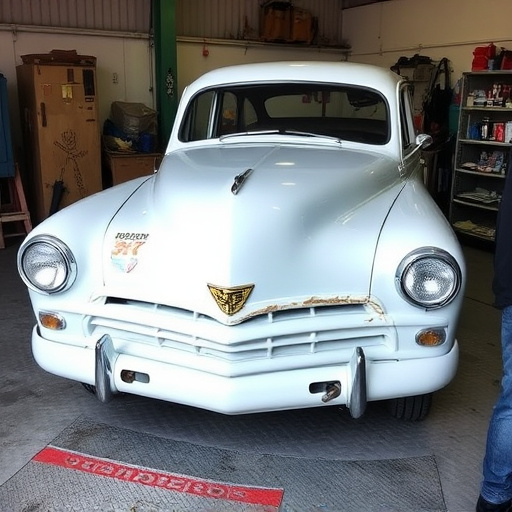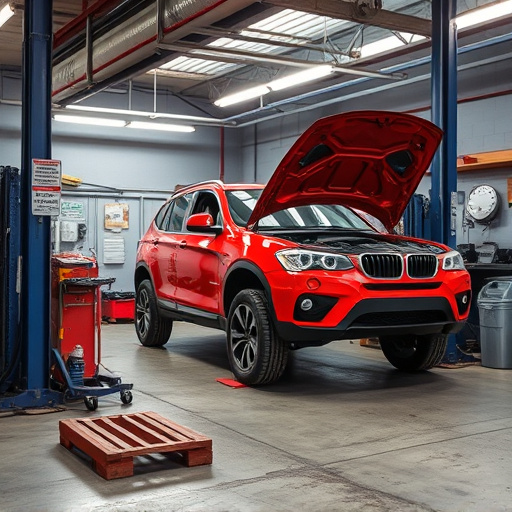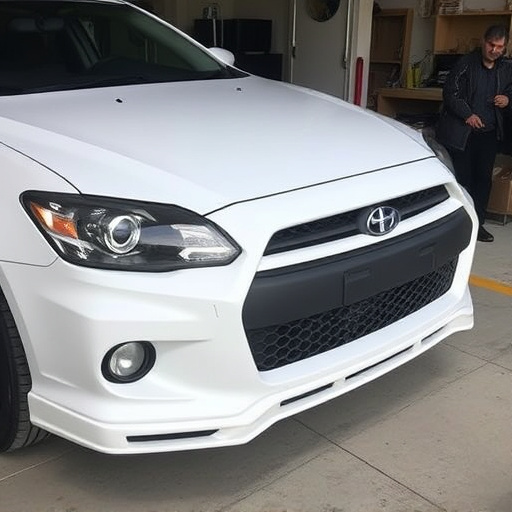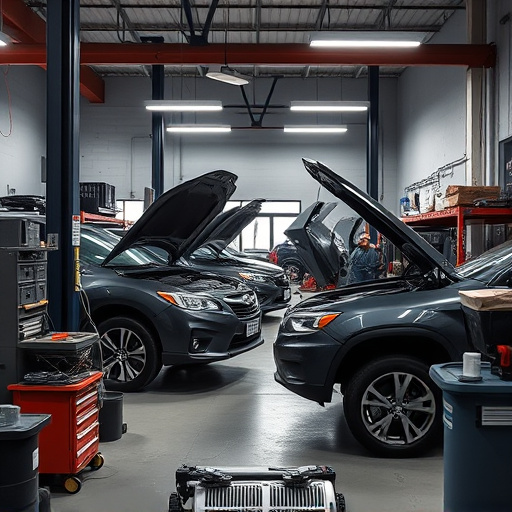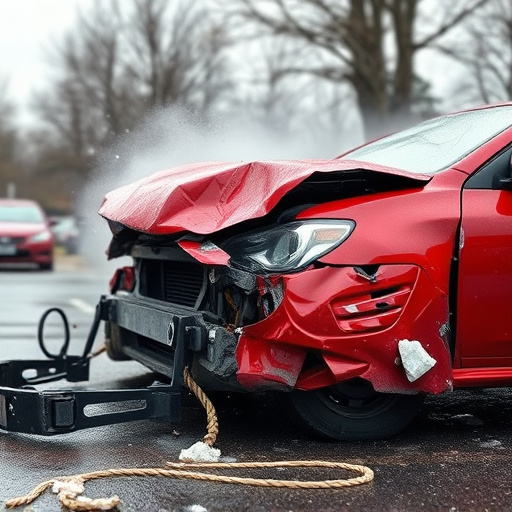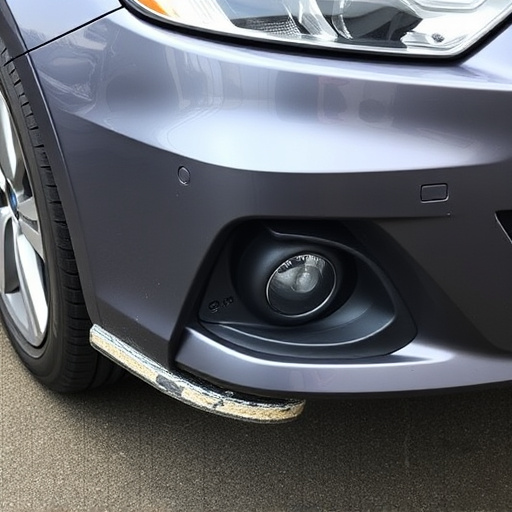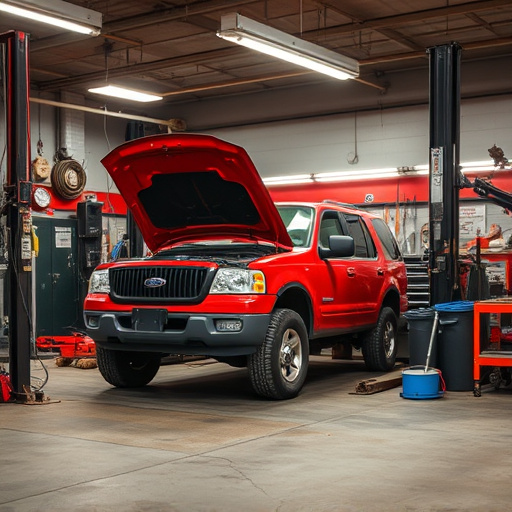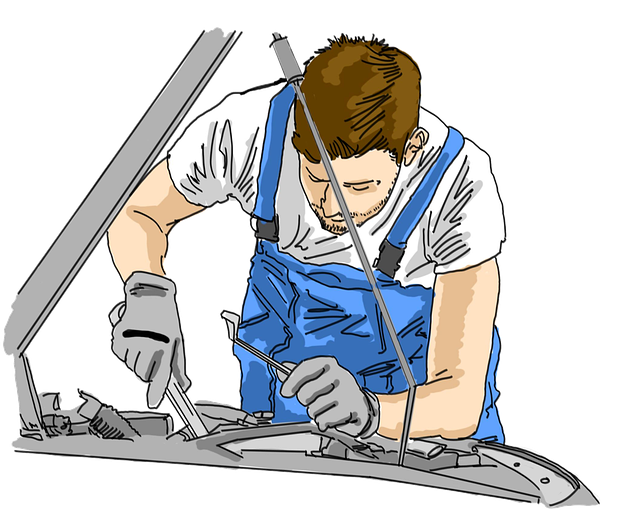In regions with severe weather, hail damage dents range from shallow to deep. Shallow dents can often be fixed with painting, while deeper ones may require bumper or vehicle paint repairs. Professional hail damage dent repair ensures safety features are intact and original appearances restored. The process includes detailed inspection, paintless repair for smaller dents, and more intensive methods for larger ones, with quality control checks to match original color. For minor dents, DIY kits offer a cost-effective solution; for complex dents, professional collision repair services using advanced equipment and techniques are recommended.
Hail storms can leave a trail of destruction, particularly in the form of unsightly dents on vehicles. Understanding and addressing hail damage dent repair is crucial for both maintaining vehicle aesthetics and ensuring structural integrity. This article delves into the world of hail damage dents, exploring their types and impact, the processes behind repair, and guiding you in choosing the most effective method for restoration, large or small.
- Understanding Hail Damage Dents: Types and Impact
- The Process of Hail Damage Dent Repair
- Choosing the Right Method for Effective Repair
Understanding Hail Damage Dents: Types and Impact

Hail damage dents are a common occurrence, especially in regions with frequent severe weather events. These dents can range from small, superficial marks to large, deep indentations that affect the structural integrity of a vehicle. Understanding the types and impact of hail damage is crucial for effective hail damage dent repair.
There are primarily two types of hail damage dents: shallow dents and deep dents. Shallow dents, often referred to as “dents” or “dimples,” leave minimal indentation in the metal and can typically be repaired with less invasive methods, such as painting over the damaged area. Deep dents, known as “bimodal” or “pockmarks,” penetrate deeper into the metal and may require more complex repairs, including bumper repair or even vehicle paint repair to restore the car’s original appearance. In severe cases, hail damage can compromise the safety features of a vehicle, underscoring the importance of seeking professional assistance from a reputable car body shop for proper hail damage dent repair.
The Process of Hail Damage Dent Repair

The process of hail damage dent repair involves several steps designed to restore your vehicle to its pre-hail condition. It begins with a thorough inspection to identify and assess the extent of the dents, ensuring no underlying damage has been caused. Once the dent(s) are accurately located and sized, the actual repair work commences. For small dents, a technique called “paintless dent repair” is often employed, where specialized tools gently push the dented area back into place without damaging the surrounding paintwork. This method is highly effective and leaves minimal to no trace of the previous dent.
Larger hail damage may require more intensive car body repair procedures. The collision repair center’s technicians will remove damaged panels for deeper dents, utilizing precision tools to reshape metal. After the dent is removed, the affected area is meticulously prepared for painting, ensuring a perfect match with the vehicle’s original color. This involves sanding, priming, and painting, all while adhering to strict quality standards. The final step involves quality control checks to guarantee the repair meets or exceeds expectations, returning your vehicle to its like-new condition.
Choosing the Right Method for Effective Repair
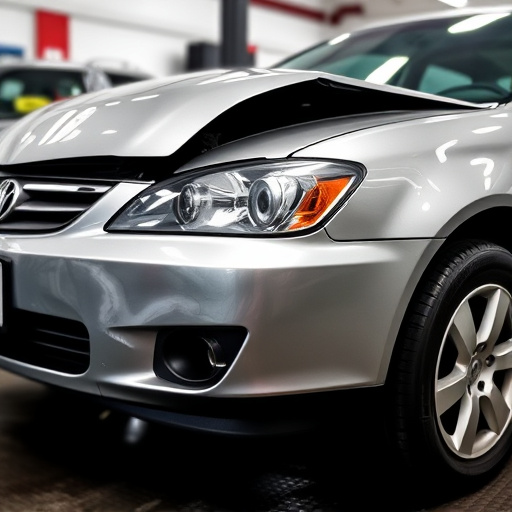
When it comes to hail damage dent repair, selecting the appropriate method is key to achieving effective and lasting results. The choice between DIY kits and professional services depends on various factors, including the extent of the dents, your skill level, and the desired outcome. For small dents, DIY kits can be a cost-effective solution offering flexibility in terms of scheduling and customization. These kits often come with easy-to-follow instructions and all the necessary tools, allowing you to repair dents at your convenience.
For larger or more complex dents, particularly on vehicles like Mercedes Benz, collision repair services are recommended. Professional technicians possess advanced training and expertise in handling diverse dent repair scenarios. They employ state-of-the-art equipment and techniques, ensuring precise and seamless repairs that match the vehicle’s original factory finish. Whether it’s a dent on auto glass or a more intricate design, collision repair shops cater to both large and small hail damage, providing peace of mind and superior results.
Hail damage dent repair is a crucial process that can restore vehicles to their pre-hail condition. By understanding the different types of dents and choosing the right repair method, whether for small or large dents, you can effectively mitigate the impact of hail on your vehicle’s appearance and value. With the right approach, hail damage dent repair becomes an efficient solution, ensuring your car looks as good as new again.
